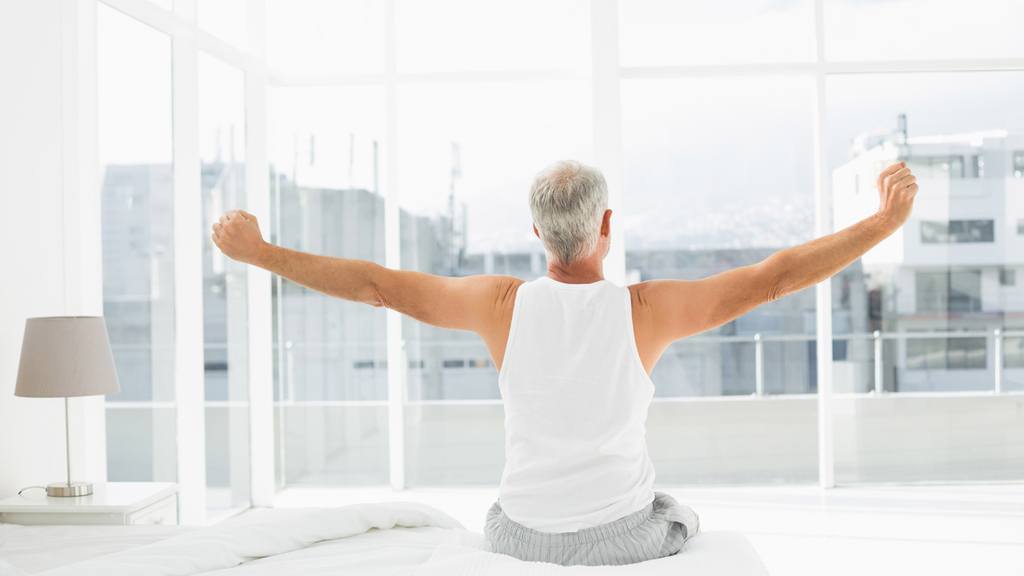
The human body has been conditioned to recognize patterns of restfulness and sleep times over thousands of years. The circadian rhythm encompasses physical, mental, and behavioral changes taking place over a daily cycle, which is a result of exposure to light and darkness in our environment. This rhythm is responsible for dictating the drive to sleep not only in humans and animals, but it also plays a role in the functionality of plants and microscopic organisms. [1]
Daylight is among the most powerful influencers compelling us to sleep. When our eyes pick up light rays, they are converted into electrical waves that pass to the optic nerve. Thereafter, the optic nerve relays the message to the body’s “Master Clock,” or the Suprachiasmatic Nucleus (SCN), which acts as a master circadian pacemaker controlling the timing of sleep-wake cycles. [2]
The SCN comprises thousands of neurons that work in tandem with one another to relay messages across the entire body. As the day winds down and the sun begins to set, the optic nerve then relays this new message to the SCN, which then releases serotonin. Our bodies convert serotonin into melatonin, allowing us to relax and ease into the first stage of sleep.
In the Textbook of Age Management Medicine: Volume 1, authors Jeffrey P. Leake, MD and Todd D. Greenberg, MD note that sleep is classified into three separate phases: wakefulness, non-rapid eye movement (REM) sleep, and REM sleep.
Joshua D’Alessandro, New York City-based Nutrition and Exercise Counselor, explains that these categories are further classified into the five stages of the sleep timeline.
After the first ten minutes of sleep, we remain aware of the environment around us. This cycle is brief, lasting seven minutes at most. [3] During this phase, we remain relatively alert and can be woken easily. To facilitate a transition into the next stage, it is recommended that individuals aim to minimize disruptive sounds and shut off all lights.
The second stage occurs within 10 to 20 minutes of initiating sleep. At this point, the SCN has released melatonin, which is taking effect throughout the organs and muscles. This is also when the body begins to slip into a deeper state of sleep.
Usually, within the first 30 to 40 minutes of sleep, we slip into progressively deeper levels of sleep. Known as “Slow Wave Sleep,” (SWS) these stages are particularly difficult to awaken from and often lead to grogginess if interrupted. [4] The pituitary gland releases the appropriate hormones during these phases as well, effectively increasing the release of growth hormones and other androgen hormones. Growth hormones are responsible for muscle protein synthesis, the efficient storage of fuel, restoration of metabolism, and overall recovery. It is therefore absolutely essential that we stay asleep during this phase, which comes just before REM sleep. We will examine the relationship between sleep and hormones in greater detail in an upcoming section.
The fifth stage, REM sleep, comprises roughly 25% of the entire sleep cycle and occurs first within 70 to 90 minutes after falling asleep. Because the sleep cycle repeats, REM sleep is experienced multiple times each night. REM cycles can last for up to 90 minutes, and it is recommended that the body achieves around six full REM cycles to maximize recovery. This can add up to seven to nine hours of sleep. REM sleep stimulates the areas of the brain used for learning, and lack of REM sleep is linked to health conditions such as migraines. During REM sleep, signals are sent to the spinal cord to halt movement. Dreaming also occurs during REM. [5]
In individuals who cannot recall the last night of sleep lasting seven to nine hours, serious changes need to be made to rearrange schedules for prioritizing slumber.
There is a large correlation between sleep quality and various aspects of health including:
High-quality sleep can reduce the required time for recovery, and can help you function optimally. Cenegenics physicians work to address your sleep, as well as exercise, nutrition, hormones, and nutraceutical supplementation to help you achieve optimal health.
Our world-class physicians create a personalized plan to help you feel 10+ years younger. You’ll be more energetic, lose weight, sleep better, have more libido, and think more clearly. Click below to schedule a free consultation with one of our physicians. It’s quick + easy.
Key Resources
This guide was produced with contributions from the following key resources:
The Cenegenics Education and Research Foundation
The Textbook of Age Management Medicine Volume 1: Mastering Healthy Aging Nutrition, Exercise and Hormone Replacement Therapy
The Cenegenics Education and Research Foundation
The Textbook of Age Management Medicine Volume 2: Mastering Healthy Aging Nutrition, Exercise and Hormone Replacement Therapy
Textbook Authors:
Jeffrey Park Leake, M.D., CPT
Dr. Jeffrey Park Leake is a Partner and Director of Education at Cenegenics Elite Health specializing in age management and wellness. Having trained hundreds of physicians worldwide, Dr. Leake is also the Director of Education for the Clinical Strategies for Healthy Aging course at AMM Educational Foundation.
Todd David Greenberg, M.D., CSCS
Dr. Todd Greenberg is a practicing physician with a broad range of expertise, including wellness, exercise, sports injuries, and MRI of sports injuries. He is a Radiology Clinical Associate Professor at the University of Washington.
Additional Resources
Why Can’t I Sleep? – Clinical Explanations
Watch Now: 3 Tips for Better Sleep
References
[1] “Circadian Rhythms.” National Institute of General Medical Sciences. Aug. 2017. Retrieved from URL: https://www.nigms.nih.gov/Education/Pages/Factsheet_CircadianRhythms.aspx
[2] Moore, R.Y. “Suprachiasmatic nucleus in sleep-wake regulation.” Sleep Med. Dec. 2007. Retrieved from URL: https://www.ncbi.nlm.nih.gov/pubmed/18032104.
[3] “Understanding Sleep Cycles: What Happens While You Sleep.” National Sleep Foundation. Retrieved from URL: https://sleep.org/articles/what-happens-during-sleep/
[4] “Sleep and Sleep Disorder Statistics.” See above.
[5] “What is REM sleep?” Eunice Kennedy Shriver National Institute of Child Health and Human Development. 01 Dec. 2016. Retrieved from URL: https://www.nichd.nih.gov/health/topics/sleep/conditioninfo/rem-sleep.
 Contributor: Joshua D'Alessandro - MS, CSCS, CISSN Health Coach at Cenegenics New York City
Contributor: Joshua D'Alessandro - MS, CSCS, CISSN Health Coach at Cenegenics New York City
My name is Joshua D'Alessandro and I am an Exercise and Nutrition Counselor for Cenegenics in NY. My passion for fitness began at a very young age and has manifested into a career filled with possibilities. The countries largest epidemic, and quite possibly the root cause of most issues, is diminishing health. In my career, I hope to do everything and anything I can to improve the well being and lives of the people around me!


